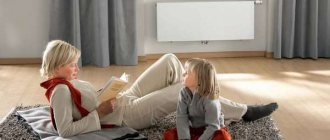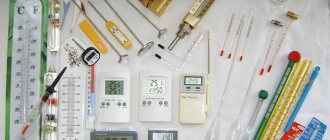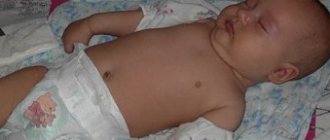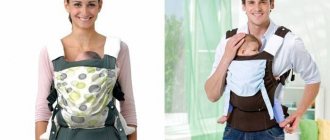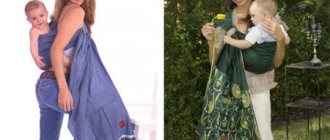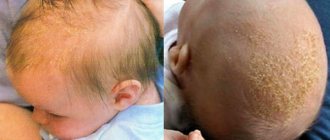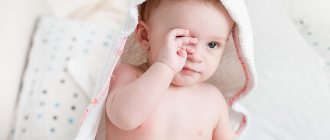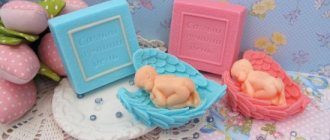Hello!
We've been looking for a car seat for our baby for days now and are completely confused by the abundance of options. And the prices for some models are simply sky-high. Is it necessary and how to choose a car seat for a newborn baby?
Tatiana
Hello! You are absolutely right in choosing a child restraint system. Today it is prohibited by law to transport a child without it.
You are right, the range of car seats for babies is huge, but only at first glance. For newborns, there are only three groups of models from which you can choose the right one.
There are also selection criteria, rules, and useful tips. However, first things first.
Groups by age
Group: 0
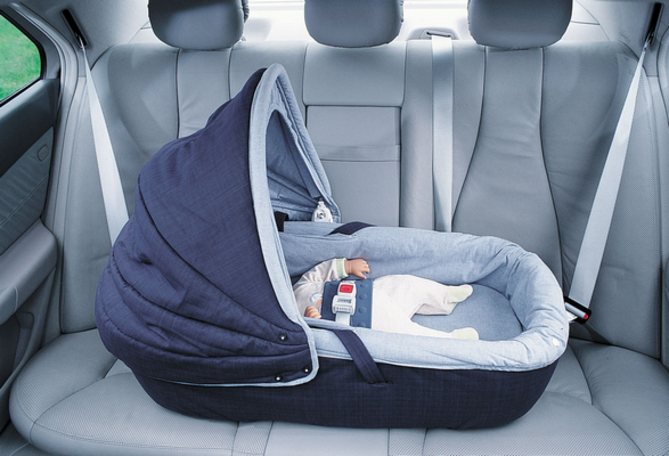
The models in this group are very similar to a sleeping block from a stroller, which is what they essentially are. Many manufacturers create their 2-in-1 strollers so that the sleeping units can be used as a child car seat. The child lies in such a chair completely horizontally. It is installed perpendicular to the movement of the car, takes up two places and is secured with two standard belts, that is, there is almost no free space left for mom or dad. It turned out to be extremely difficult to achieve satisfactory safety in such models even for the most famous brands. They are mainly used for transporting newborns over long distances, premature babies and children with spinal problems. Problems with real safety, extremely short service life, heavy weight and high price have made chairs of this type unpopular.
Group: 0+ (0-13 kg)
Models in this group are very basket-like, compact, lightweight and take up one place in the car. The child is fastened using internal straps. The chair has a comfortable handle for carrying your baby from home to car and vice versa.
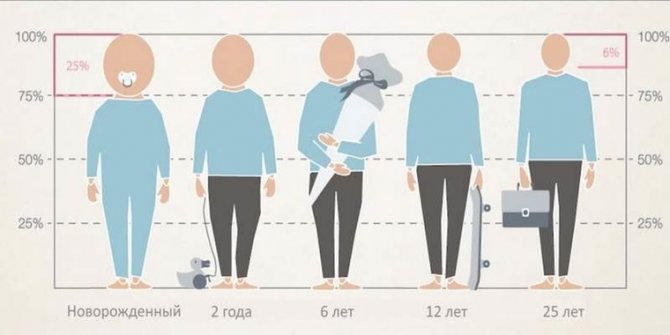
A child at this age has a disproportionately large head weight compared to the rest of the body, and when braking, very dangerous overloads of the spine occur. To prevent this, such seats are installed with their backs facing the direction of travel of the car. After reaching one year, installation is possible both facing the direction of travel and facing the opposite direction. Please note that the seat can only be installed in the front seat if the airbag is disabled or missing.
The models in this group are already similar to real chairs and are intended for children from one to four years old or weighing up to 18 kg. They have internal straps or a bumper and are installed facing the direction of travel. Seats of this group in their pure form are very rare, since manufacturers usually combine them with other groups.
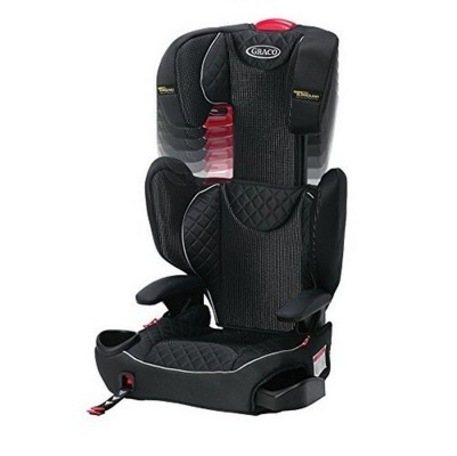
The models in this group also look like real chairs and are intended for children from 3 to 7 years old or up to 25 kg. They do not have internal straps, and the child is secured with a standard car belt, which passes through a system of grooves and holes. Installed in the direction of travel. The backrest is pressed against the car seat, but a slight tilt for sleeping is possible. Seats of this group are also quite rare in their pure form.
Boosters. Models in this group are a chair seat without a backrest and are designed for older children over 130 cm tall and teenagers. They are needed to lift the child so that the car seat belt can safely pass over the hips and chest. The boosters have a hard structure on the inside and a soft cover on the outside. The external shape provides hooks for passing a car belt. Sometimes boosters have armrests. It should be borne in mind that they are powerless against side impacts in particular and often fail crash tests in general.
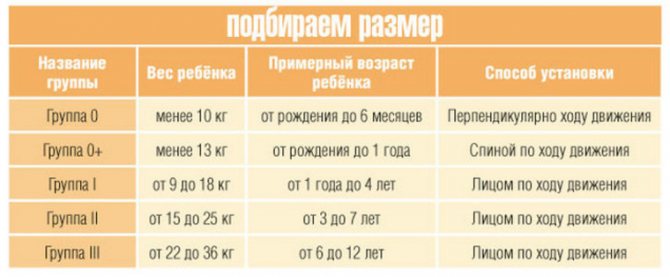
The most popular combinations of transformers:
0-1 (0-18 kg), 0+1 (0-18 kg), 0-1-2 (0-25 kg), 1-2 (9-25 kg), 1-2-3 (9- 36 kg), 2-3 (15-36 kg)
It should be noted that universal chairs for several groups are inferior to chairs with one group in safety or comfort, and more often, both at the same time.
One of the best manufacturers of baby carriers
Carrycot Fairy
The domestic brand “Fairy” produces inexpensive but high-quality products for children: cribs, swings, playpens, cradles, chests of drawers, changing boards, bathtubs and much more. Products of this brand are in great demand in Russia and the CIS countries, as they are made from hypoallergenic materials and meet safety requirements. The affordable price and simple, laconic, no-frills design only increase the number of fans of this product.
- A flexible but rather rigid frame retains the shape of the product throughout the entire period of active use.
- The top of the cradle is covered with practical waterproof material in dark colors. The hoods are removable, but not foldable.
- The lid is secured with zippers on both sides.
- The handles are connected with a Velcro fastening.
- The set includes a long strap with carabiners for carrying the cradle on the shoulder.
“Fairy” baby carriers cost in the range from 800 to 1,500 rubles. They are intended for children weighing up to 7.5 kg. They fit into any strollers for babies and perform their functions 100%, protecting babies from wind and precipitation.
Carrycot LEO
founded in Russia in 2002. Its main specialization is children's clothing, but for several years now under the same brand they have been producing baby carriers.
A special feature of the products of this brand is the stylization of the models. While most competitors opt for a sleek, practical design with a sporty style, this is different. The LEO collection has several luxurious and delicate options with lace, stylish carriers for little gentlemen, stylized as tailcoats, carrier bags in the form of sneakers, models with oriental patterns, bright polka dot options and many others.
The price range is from 1,500 to 5,000 rubles, depending on the design and materials used.
Carrycot Slaro
The products of the Polish brand of baby strollers Slaro are in high demand in Russia despite the price being above average. Products of this brand are made of excellent quality materials, beautifully sewn, so they last for many years without losing their appearance. The same can be said about baby carriers.
The cost of models is from 2000 to 2500 rubles. The body is made of waterproof dense fabric. The handles are sewn to the sides at an angle, which reduces the load on the hands. The visor is quite low, so the child's face is hidden from prying eyes. The lid closes with two zippers. can be used as a stroller cradle.
Baby bassinet swing Sweet Baby Paradise
In the most difficult first year, the automatic rocking cradle Sweet Baby will become your reliable assistant in this difficult task - rocking your baby to sleep. Thanks to the 5-speed automatic rocking mechanism, the child will quickly fall asleep and sleep in a sound, restful sleep. 12 fairy-tale melodies will also help you so that your little prince or beautiful princess has colorful dreams.

Baby chair cradle Leader Kids Voyage
The main purpose of the Leader Kids Voyage car seat is to ensure safety and comfort for the little passenger during a car trip. It is designed for children weighing up to 13 kg (from 0 years to 1 year). The seat is installed rear facing in the rear seat and secured with standard seat belts. When the airbag is deactivated, the seat can be secured in the front passenger seat also facing rearward. Includes: soft headrest, side impact protection, newborn insert, roof.
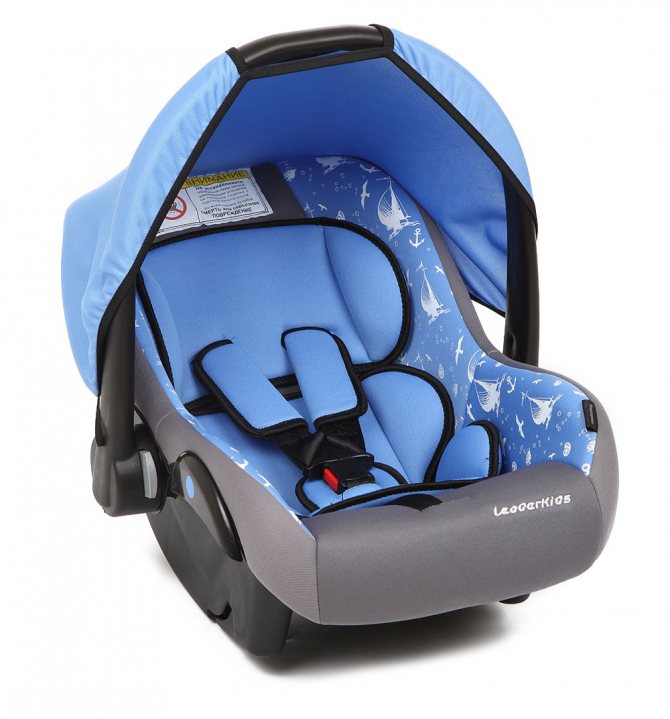
Baby cot cradle Nuovita Accanto
To level the beds to the same level, the side crib has five different height positions. At the same time, the front side is made of “breathable” mesh fabric, providing air circulation and the ability to monitor the child. Additionally, the tilt of the crib itself can be changed, which allows for even better air circulation and prevents the baby from spitting up after feeding. During the day, this crib can be used as a free-standing crib on wheels. For ease of storage or transportation, it can be folded compactly.
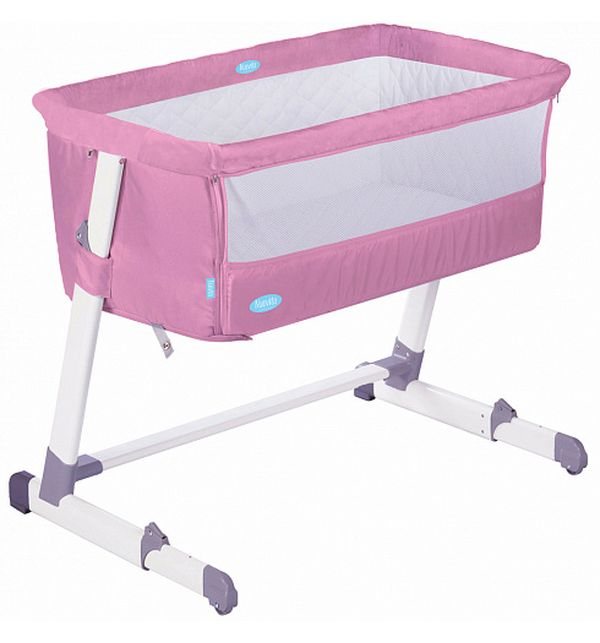
Side protection
The old standards did not oblige manufacturers to test car seats for side impacts, and only consumer communities included such crash tests in their studies. From 2020, all manufactured seats will require a mandatory side impact test, which will significantly improve child safety.
Next method: tilt only the back. The range of angle changes is most often small.
A completely horizontal position can only be in cradles for newborns. In carrier chairs of group 0+ (for babies up to one year old) the position is almost horizontal
For slightly older babies, it is necessary that the head and back have support, and the butt has support. The most optimal position is the fetal position, with an inclination of 45°.
Additional comfort options
Visor or hood.
The visor is used most often in chairs of group 0+. Protects from bright sunlight, and if the baby falls asleep, from wind and rain when carrying home or exercising in nature. Removable if necessary.
Pen
Models 0+ have one large handle for carrying in several positions, with which you can carry a child in a chair, use it as a rocking chair or, conversely, as a stopper to prevent rocking. In models of older groups there are two small handles for transporting the chair itself.
Liner
For safe back and head support, additional stress reduction and proper weight distribution, 0+ models use orthopedic inserts. They come in several types: liner-roller, liner-bedding, liner-pillow.
How to choose the right baby carrier
When purchasing a baby carrier, you need to choose the best option, which can be used not only for discharge from the hospital, but also for walks in the fresh air and visits to the children's clinic.
Materials for the carrying bag must be chosen that are environmentally friendly and absolutely safe from an allergy point of view. The carrier should have a cotton lining and the outer layer may be polyester.
Handles must be made of reliable materials. They can be made of polyester, or they can have a different type of finish, but with greater durability.
The bottom of the carrier bag must be absolutely solid and level so that the child can be carried without changing its position. Most often the bottom can be plastic or plastic.
Tests
The child car seat must have a certificate of conformity, a test report and a type approval message. The original is with the manufacturer, copies are with the sellers.
Remark: according to the Russian Red Cross, out of 59 child restraint devices, 46 do not meet technical standards, but have properly issued certificates (and such a depressing picture in the small volume of products with a obviously legitimate certificate, while in the country there are many times more car seats without certificates, with counterfeit certificates, certificates issued by an unauthorized organization or with revoked accreditation).
At the moment, the standards ECE 44/04 (= Technical Regulations of the TS “On the safety of wheeled vehicles”) and ECE R129 (i-Size) are in force simultaneously, the first is mandatory, the second is advisory. From 2020 ECE R44/04 ceases to be valid. The new ECE R129 standard provides for some changes, such as: mandatory transportation of children under 15 months with their backs in the direction of travel (previously - up to 9 months), mandatory equipping of car seats with an ISO-Fix mount (previously - not mandatory), mandatory testing of the seat for side impact (previously there was no requirement), the group is selected by age and height (previously by weight), etc.
Crash tests
Child car seats in Europe are always under close attention of regulatory organizations and public associations. Thus, the consumer clubs ADAC in Germany, Autoliito in Finland, RACC in Spain, TCS in Switzerland, OAEMTC in Austria, the ANWB association in Holland, the Russian magazine Autoreview and many others, having a good technical base, constantly test and evaluate seats according to the ratio degree of protection, cost, ease of use, etc.
— Inspect the places where the belts pass, and strictly follow the instructions to connect the chair to the car.
— Carry out a training fastening of the child, check the comfort of the fit, the tightness of the straps, the absence of twisting and pinching.
— Talk to your child about the dangers of removing the straps or unfastening the lock (if possible).
— In advance before the onset of the cold season, check the possibility of fastening in winter clothing.
— Buy covers for the front seats (so that children don’t get them dirty with their shoes).
— Constantly check the height of the headrest (the head cannot protrude more than 1/3 for forward-facing seats and should not protrude at all for rear-facing models).
— Purchase reflective fabric (blanket) to protect from direct sunlight to avoid cracking of plastic parts and fading of upholstery fabric.
— Examine all parts of the chair body annually, looking for cracks or changes in shape.
Yes, and you can’t buy a used seat from unknown people, since even the slightest accident will deform the body, which means it can no longer be considered a working safety device.
All.
Good luck on the roads!
What is the difference between an infant carrier and a car seat?
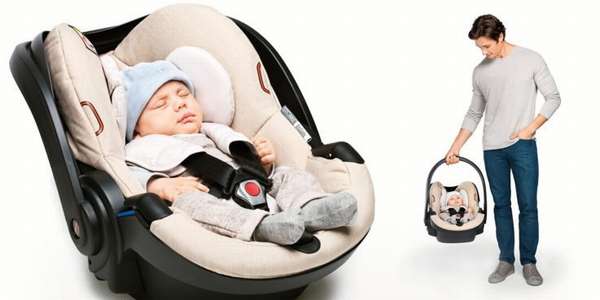
The car seat is child safety. It is placed in the back seat and secured with standard seat belts. Often the cradle is confused with a car seat. And here it is important to understand that, despite the same functionality, these products are fundamentally different.
A car seat is a small-sized carrier designed to accommodate babies up to one year old. In it, the baby is in a reclining position, since this is the most physiological position at an early age. This is all connected with the same muscle weakness and skeletal imperfections. It is permissible to sit down a child from the age of six months, or even later - it is believed that only then is he ready for this. The car seat takes this feature into account, so the child lies in it.
If we consider a standard car seat, it is assumed that the child will ride in it while sitting. This option is absolutely not suitable for a baby. In addition, the car seat is larger in size, because it is designed for older children, and a baby newborn will literally drown in it.
The car seat is placed against the direction of travel or perpendicular to it. This allows the child not to experience overload and not get motion sickness. The car seat is usually placed in the direction of travel - this will make traveling more interesting for an older child.
The car seat has more belts to secure the child. There are fewer of them in a car seat. In addition, there are special bolsters that will support the baby’s head, preventing it from swaying from side to side. Which is also extremely important. Children who have already learned to hold their heads can sit in the chair.
A car seat in a car is a must-have attribute, as it ensures the safety of the baby and also literally frees up the hands of the young mother. Firstly, she can drive and not worry about how the child is doing - after all, he is securely secured. Secondly, she can ride behind him, but do her own thing. If you wish and have some skill, you can even feed the baby without taking him out of the cradle.
In a carrycot, without a car seat, from what age?
- The first months of a baby’s life are the most important and exciting for parents. We recommend not traveling with children under 3 months. You will have to invite doctors to your home, but this is much safer than riding in winter with a baby, for example.
- However, it is not prohibited by law to transport newly born babies, but this must be done using a special device. It is purchased depending on the child's weight. There are 3 categories: up to 10 kg, up to 15 and up to 20 kg. For a newborn, of course, a cradle up to 10 kg is suitable.
How to put a baby to bed?
- The baby is placed in a horizontal position, so the load does not go to the fragile back muscles. The device is installed perpendicular to traffic. That is, parallel to the front seats, the child should look towards the window. It will take two seats, and will be attached with special, additional belts. The traffic rules do not prohibit carrying an infant passenger in front, but be sure to place the seat with its back to the traffic.
- This arrangement will hold the baby. Do not allow the body to twitch when braking and will completely protect the child’s entire journey, calming the parents’ nerves.
Price for carriers
Baby carriers, the price of which varies depending on the model and manufacturer, have a fairly large range in cost. Finding a cradle from 1000 rubles means purchasing a product of dubious quality and production. Above, the article presented the basic tips that you should follow when buying a carrycot for a newborn.
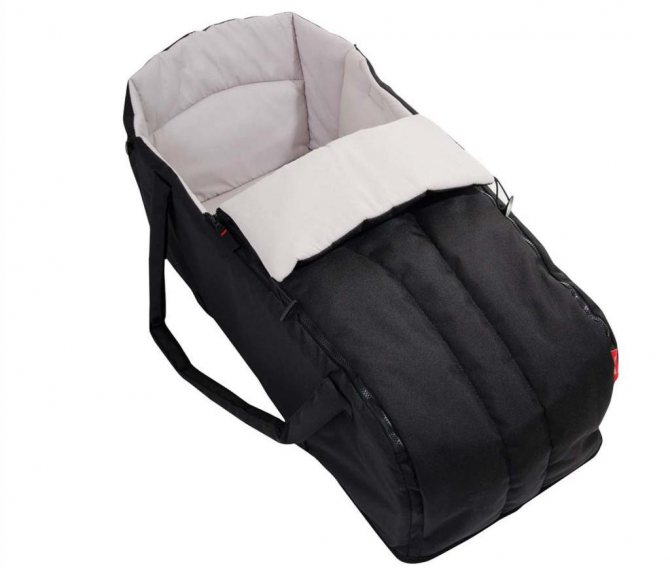
Only based on personal desire, financial capabilities and preferences for the manufacturer can you settle on a specific model. It is best to visit several stores, look at different models, and settle on a more interesting option. Baby carriers for newborns in St. Petersburg are presented in a wide range in specialized stores, various retail chains and supermarkets.
State rules for transporting children from birth
On January 1, 2006, legal requirements for transporting children in a car came into force. Corresponding changes have been made to the traffic rules.
According to the law, children under 12 years of age must be transported in a car in special restraints in accordance with their age category.
Important! If the rules for transporting children are not followed, a fine of 3,000 rubles is established (Article 12.23 of the Administrative Code). Moreover, punishment is provided for both the absence and malfunction of a car seat.
Safety experts are sure that a child under one year old should be fastened not with his face in the direction of travel, but with his back.
In some countries, it is prohibited to transport children under 4 years of age facing forward.
This statement is due to the structural features of the skeleton, and in particular the poor development of the spinal column and, as a consequence, the high probability of serious damage during an accident.
What age are they intended for?
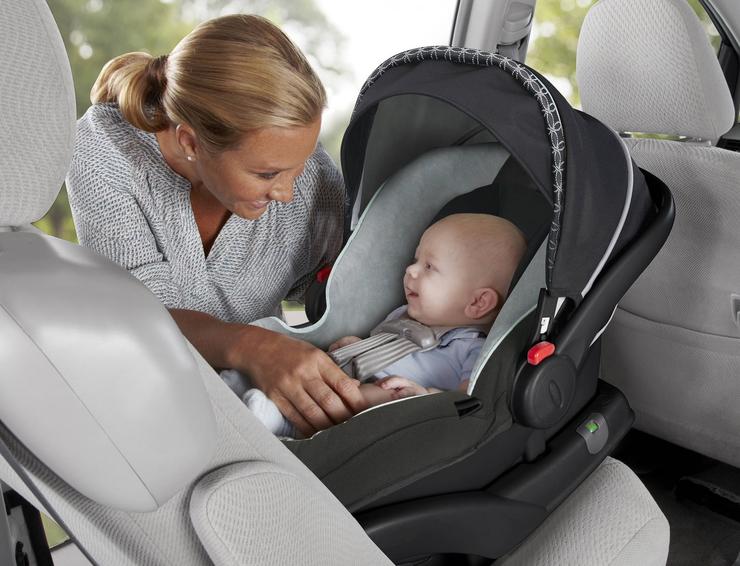
When choosing a car seat, they focus on such an indicator as the group - it is calculated based on the age and weight of the baby.
There are three groups of infant carriers for newborns:
- group 0 – age from birth to 6 months, weight up to 10 kg;
- group 0 – age from birth to 1.5 years, weight up to 13 kg;
- group 0/1 universal – age from birth to 4 years, weight up to 18 kg.
Car seats of higher groups are intended for children from 4 to 12 years old.
The maximum weight for which a group “0” car seat is designed is 10 kilograms. That is, such a cradle will not be used for very long and this period will end when the baby is about a year old.
Car seat 0 1 is designed for transporting older children - from 6-8 months. The devices are suitable for babies weighing from 9 to 18 kilograms. These children have already strengthened their back and neck muscles, so such chairs are not suitable for newborns; for infants, it is still customary to buy cradles 0 and 0.
When choosing a child seat, pay attention to two more factors:
- focus on the weight of the small passenger, and not on the age: if your child already weighs more than 10 kg at one year, then you do not need to carry him in the “0” seat, purchase the “0” or “1” option;
- Remember that in winter the baby will weigh more as he is usually wrapped up warm, so consider the time of year when choosing a car seat.
Requirements for a seat for a newborn
As a caring and loving mother, you worry about your child and want your baby to be safe while traveling in the car.
This is the main requirement when choosing a child restraint system.
Security can be ensured by a combination of three factors:
- Isofix fastening;
- car seat belts;
- the internal belts of the car seat.
Unfortunately, not all models have such capabilities. Only portable chairs provide the highest level of safety.
To help you decide how to choose a car seat for your child, check out some useful tips:
- Check for a special orthopedic insert. In the first months of life, a baby is very small and needs space in any arrangement. The insert will help secure the child's body.
- Material and quality of upholstery.
Prefer natural fabrics in calm shades. Ideal if there is a removable cover. This will help you keep your device clean and safe on a regular basis.
- Certificate of quality.
Only specialized stores have all the necessary documents that you can view. Be sure to check for the special ECE R 44 or ECE 129 i-Size badge. They say that the product has been tested and meets European quality standards.
- Comfortable straps.
Choose a chair together with your child. Having placed it in the product, check the reliability of the belts: are they rubbing? Are all connecting elements protected by soft pads?
- For children under 3 years old, it is mandatory to have internal five-point harnesses that protect the child from injuries to the abdominal cavity and spine.
- Since your baby sleeps a lot in the first months of life, it is important for you to choose a car seat for children with a sleeping position. Check that the model you choose is tilt adjustable if it is not possible to purchase a car seat.
Tip: In winter, dress your baby in an insulated envelope. Thick overalls and jackets will not allow you to fasten your seat belts tightly.
The best brands of seats for newborns
A car seat for children from 0 months must meet 4 main criteria:
- have the badges of the current European safety standard;
- suit the weight;
- be comfortable;
- fits well into the car.
The remaining factors in the choice will be purely individual, relating to issues of comfort, prestige and taste.
As you can imagine, there is no single best car seat for a newborn that fits all children and cars.
If you are at a loss as to which car seat to choose for your child, then on the websites of specialized stores you can familiarize yourself with the ratings of child car seats in each group.
